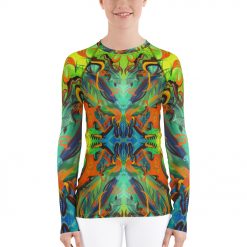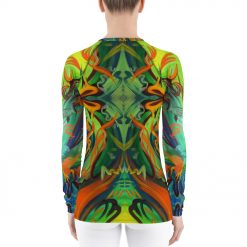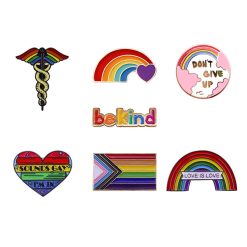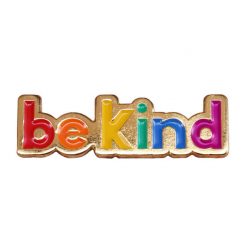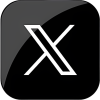Points
North & South Nodes
North Node The North Node (
The North Node (![]() ) and South Node (
) and South Node ( ![]() ) of the Moon are points that are directly opposite each other. Together, they form the Nodal Axis. They are not planetary bodies; rather, they are mathematical points that take into account the relationship between the Sun, Moon, and Earth at the time of our birth. More specifically, the Moon’s nodes are the points where the Moon’s orbit intersect the plane of the ecliptic.
) of the Moon are points that are directly opposite each other. Together, they form the Nodal Axis. They are not planetary bodies; rather, they are mathematical points that take into account the relationship between the Sun, Moon, and Earth at the time of our birth. More specifically, the Moon’s nodes are the points where the Moon’s orbit intersect the plane of the ecliptic.

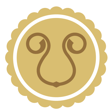
The Nodes of the Moon represent points of personal karmic imbalance. The North Node represents the kinds of experiences that we must work to develop in order to work with our karma, and to grow spiritually. The South Node represents those experiences and qualities that come naturally to us, that are over-developed, and that we tend to fall back on. The South Node can be a point of undoing unless we develop the North Node experiences and qualities. Thus, consciously working on these “life lessons” can bring us to increased happiness and fulfillment. If we over-emphasize and fall back on the qualities of our South Node, at the expense of developing our North Node, we may have a difficult time feeling personally successful.
Interpretation of the North Node/South Node in the Natal Chart:
The North and South Lunar Nodes, always exactly opposite to each other, are the point where the Moon’s orbit intersects the Earth’s. The North Node symbolizes the place of growth towards which we must progress even though we are often “new” and inexperienced as we start our journey. The South Node symbolizes our acquired experience, and indirectly, the place we must part from, in order to develop.
North Nodes & South Nodes: The Astrology of Your Life Purpose and Past Lives
What’s your life purpose? In your birth chart, the lunar nodes—known as the north node and south node—hold the keys to your destiny and ultimate life lessons.
In astrology, your life purpose is encoded in the north node and south node of the moon. The lunar nodes are directly opposite each other in the chart. They aren’t planets, but rather mathematical points on the chart that fall in two opposite zodiac signs. For example, if your north node is in Capricorn, your south node will be in its opposite sign of Cancer, and so on.
Bottom line: The north node represents our karmic paths and the lessons we came here to learn—or the language we are learning to speak. The south node reveals the challenges and gifts we bring in from previous lifetimes.
How can I find my north node and south node?
Scroll down to use our date tables. Or calculate your lunar nodes by doing a free birth chart here on our site.
Read About Your North and South Nodes:
![]()
The South Node:
Revealing Past Lives, Natural Abilities
 The South Node reveals the gifts that you bring into this lifetime, your sweet spot, your comfort zone. You will be innately good in these areas of life, and may begin your early path based on your South Node leanings. While this can bring a sense of satisfaction, it is unlikely to elevate you to Blissville. There’s a sense of “been there, done that” in the field of South Node activities. And indeed you have: in many past lifetimes. The key is to use your South Node as a springboard into your North Node destiny, much like an expat living abroad will always feel most comfortable speaking her native language, even if she’s lived in her new country for many years. The South Node is your horoscope hometown, perhaps not the place you want to settle permanently, but somewhere cozy to visit when you need to feel a sense of place or belonging.
The South Node reveals the gifts that you bring into this lifetime, your sweet spot, your comfort zone. You will be innately good in these areas of life, and may begin your early path based on your South Node leanings. While this can bring a sense of satisfaction, it is unlikely to elevate you to Blissville. There’s a sense of “been there, done that” in the field of South Node activities. And indeed you have: in many past lifetimes. The key is to use your South Node as a springboard into your North Node destiny, much like an expat living abroad will always feel most comfortable speaking her native language, even if she’s lived in her new country for many years. The South Node is your horoscope hometown, perhaps not the place you want to settle permanently, but somewhere cozy to visit when you need to feel a sense of place or belonging.
![]()
The North Node:
Your Destiny That’s Calling
 The north node is the exact opposite zodiac sign of the south node. It illuminates the terrain that’s calling your name, but climbing to the peak of this mountain is like trekking up Mt. Everest. You’ll have to lighten up your baggage and enlist a proverbial Sherpa to get you up that hill. It’s your learning curve. North Node activities require you to stretch out of your comfort zone. Once you do, you’ll be amazed by how fulfilled you feel. It’s like the activation of your life’s mission. The sooner you align yourself with this path, the more purpose-driven your life will become. However, you will often return to your South Node as that “ace in the hole”—kind of like returning home to your roots, even after you’ve made your way in the world.
The north node is the exact opposite zodiac sign of the south node. It illuminates the terrain that’s calling your name, but climbing to the peak of this mountain is like trekking up Mt. Everest. You’ll have to lighten up your baggage and enlist a proverbial Sherpa to get you up that hill. It’s your learning curve. North Node activities require you to stretch out of your comfort zone. Once you do, you’ll be amazed by how fulfilled you feel. It’s like the activation of your life’s mission. The sooner you align yourself with this path, the more purpose-driven your life will become. However, you will often return to your South Node as that “ace in the hole”—kind of like returning home to your roots, even after you’ve made your way in the world.
We often think that just because we’re good at something—or it comes easily to us—that it’s what we should “do” with our lives. Yet, sometimes, the easy way doesn’t feel spiritually satisfying. Maybe you’ve taken this path enough times in past lives, and you’re ready for something new. One of our favorite books on this topic (and actually, one of the few written) is Jan Spiller’s Astrology for the Soul.
 How are the nodes used in astrology?
How are the nodes used in astrology?
Astrologers use the lunar nodes to determine where your destiny lies (north node) and what you were in past lifetimes (south node). The nodes change signs every 18 months approximately. People born within your same lunar node group are like your “soul tribe.” You incarnated with to learn the same lessons.
The lunar nodes are determined by the points where the moon’s orbit crosses the “ecliptic”—the apparent path the Sun makes around the earth. (We say “apparent” because in reality, the earth is revolving around the Sun…but from our vantage point on the planet, it appears that the Sun is moving.) The nodes take into account the Sun, the moon and the earth. They fall in the same signs that the eclipses are in when you’re born.
The lunar nodes help us answer questions like: What am I supposed to do with my life? Why am I here and what’s my mission? What was I in a past life?
The nodes play a powerful role in non-Western astrology. Kabbalah’s astrology focuses primarily on the lunar nodes. This system calls the north node your tikkun (“correction”) and view it as the karmic adjustment your soul must make. Vedic astrology calls the nodes the head (Rahu/north node) and tail (Ketu/south node) of the dragon and take a harsher view of the south node’s karma.
Note to parents-to-be: if you have a child around the age of 18-19 or 36-37, you’ll share the same nodes. And if you date, marry or join forces with someone 9-10 years older or younger than you, there’s a good chance they’ll have the opposite nodes. (For example, your south node is Virgo and their north node is Virgo). This can be a powerful but polarizing pairing—you’ve both mastered what the other one has come here to learn. If you combine your natural skills, you can be unstoppable.
The ultimate book on the nodes is Astrology for the Soul by Jan Spiller. A huge influence who we learned so much from, Spiller passed away July 2016. We are forever grateful for what we learned about the nodes from her writing.
Planets in Astrology : Nodes
Sun (Surya)
Moon (Chandra)
Mars (Mangal)
Mercury (Budha)
Jupiter (Brihaspati)
Venus (Shukra)
Saturn (Shani)
Nodes (Rahu and Ketu)
Astronomy:
Rahu and Ketu have been considered as Grahas in Vedic astrology. They have no physical identity but only mathematically calculated sensitive points having immense influence on the natives of earth.
Moon in its orbit, on a northerly course from South to North, crosses the ecliptic (the apparent path of Sun). This point of intersection is known as Rahu or Dragons head. 180 degrees away from this point, Moon on its southerly course crosses the ecliptic. This point is called the dragon’s tail or Ketu.
Rahu and Ketu are unique to our system or astrology. Why so much stress on the point of intersection of the ecliptic is given has to be understood. While sun is the body and Moon is the mind the intersection is bound to give immense effect.
Rahu and Ketu are not stationary in space but have a mean motion of about 19 degrees and 30 minutes in a year. It means it takes about 18 years and 6 months to make a revolution around the Earth. This motion is retrograde. There is a concept of Mean Rahu and True Rahu. In Hindu astrology we take the true position of Rahu and Ketu.
Mythology:
This story relates to the great churning of the ocean by the Devas and the Asuras to take out Amrita. Lord Vishnu with the intention of preserving good made it a point that the Amrita should not go to the Asuras. To ensure this he took the form of Mohini. Mohini so maneuvered the sitting arrangement that she got to the Devtas first. The Asura to understand this trick was Swarbhanu. He took the form of Devas and positioned himself in between Sun and Moon. When his term came he also received Amrita from the disguised Lord Vishnu. Before Swarbhanu could drink the Amrita Sun and Moon identified it. Lord Vishnu severed off his head with his Sudarshan Chakra. However, some drops of Amrita had gone down hence both the head and body became immortal. The head represents Rahu and Tail is Ketu.
The severed head was taken by Simihika the mother of Asura Swarbhanu and nursed patiently. The head over a period of time got the body of Serpent and he was named Rahu. A Brahmin named Mini took the body. He brought up this body as his own son. To this body Lord Vishnu granted a serpents head. This became Ketu who in the due course of time became a saintly and revered seer.
Rahu and Ketu have not forgiven Sun and Moon for exposing them and they cause Eclipse.
Astrological Significance:
Rahu:
Rahu is the significator of the following as per Uttara Kalamrita.
a) Faulty Logic b) Harsh speech c) Outcaste d) an irreligious person e) going to a foreign country f) Unclean g) Bones h) abdominal ulcers i) Falsehood j) South western direction k) serpents l) Old age m) Maternal grand father n) Worship of Vana Durga o) Writing Urdu or Persian (Because these two languages start from right hand side, written in reversed manner, like Rahu and Ketu’s movement in Zodiac, which is retrograde or Apsavya move. p) Breathing q) Acute duodenal pain.
It is observed that a strong Rahu is good for the above mentioned significations and weak Rahu shows just the opposite.
Ketu:
Ketu is the significator of following as per Uttara Kalamrita
a) Worship of Chandi, Ganesh and others b) Medical practitioner c) Vultures d) Final emancipation e) Consumption f) Painful fevers g) Bath in Gangesh h) Great penance i) Wind complaints j) Mantra Shastrak) Instability of mind l) Diseases of the stomach and eye m) Vedanta n) Grandfather o) Small pox or boils p) A servant of Shiva q) Association with foreigner or Shudras.
It is observed that a strong Ketu generally gives good result and a malefic Ketu creates lots of hindrances in life.
Other Astrological Considerations:
Rahu:
Rahu is in own house in Kanya Rashi. It is exalted when placed in Vrishabha Rashi while it is debilitated when placed in Vrischik Rashi. However, there are divergent views on this. Some authorities take the Exaltation and Debilitation points as Mithuna and Dhanu respectively. It is said that Rahu gives Yogkarakaresult if placed in Cancer Karkata Rashi. However, it has to be noted that being a Chhaya Grah it gives results based on the planetary influences. It is generally observed that with a benefic or in benefic influence it gives very good result. It is generally considered as a good planet for worldly comforts. However, there is lots of Maya attached with Rahu. In modern times Rahu represents Computers, Internet and Mass Media.
Rahu is friendly to Jupiter, Venus and Saturn. It considers Sun and Moon as its enemy and towards Mercury it is Neutral.
Ketu:
Ketu is exalted when it is placed in Scorpio Vrischik rashi and debilitated when placed in the VrishabhaRashi. However, some authorities have given the Exaltation and Debilitation point as Dhanu and Mithunarespectively. It has to be said that Ketu is more towards spiritual side and is the Karaka for final emancipation whereas Rahu is more towards worldly pleasures. Again it has to be said that being a Chhaya Graha gives results according to associations.
However, in spite of having number of ancient texts extensively dealing with various signs of exaltation and debilitation of Rahu and Ketu there exists significant amount of controversy over the same.
Ketu is friendly to Mars, Venus and Saturn. It considers Sun and Moon as his enemies and towards Mercury and Jupiter it is Neutral.
Moon’s North Node 
The Moon’s North Node indicates the direction, area and manner in which the being seeks his or her destiny.
Moon’s South Node 
Indicates the resources and gifts the being brought into this world, which could be used to achieve his or her destiny.
The Moon’s Nodes
These are not planets but abstract points and many astrologers consider them as karmic points. They are the points where the monthly path of the Moon crosses the annual path of the Sun (known as the ecliptic – the path of the Sun as seen from a point on earth and projected onto the celestial sphere).
Astronomically, the nodes are important because we only get an eclipse when a full or new moon is on (total eclipse) or near (partial eclipse) a node.
The nodes are always exactly opposite each other and while their meanings are individual, the nodes are considered inseparable and they form a single principle. In Western astrology there are several variations of meaning:
- For some, this is considered the path of the soul or personal karma;
- Others interpret the nodes as overdeveloped (north node) or underdeveloped (south node) aspects of our character;
- Some declare the nodes represent the spiritual direction the individual is heading (north node) and characteristics and behavior of the past which are better left behind (south node).
- Another view is that the north node represents an area of our psyche or life that we need to develop in ourselves and the south node is where we are so comfortable that we are usually unconscious about our actions and so get into trouble.
- In Vedic astrology (Jyotish), both nodes are problematic.
The nodes are also called the Dragon’s head and tail – the dragon in mythology being the beast that sought to devour the sun and so cause eclipses.
the Dragon’s head is the North Node and
the Dragon’s tail is the South Node.
Arabic Parts (Lots)
Arabic Parts are abstract points in the chart created (for the most part) by adding two points in the chart and subtracting a third. The points can be planets, the nodes, the ascendant or midheaven.
Al Biruni, a mathematician and scholar who lived in the 11th century (for a biography, click here), was one of their main proponents. Much of what we know about their use comes from his writings. There approximately 100 Arabic Parts. They represent points in the chart related to career, marriage, treachery, organization, increase, fertility, etc. In the earlier astrology of Ancient Greece (Hellenistic astrology), many of these same parts were used and called “the Lots.” An example of their use can be found in the 4th century text Mathesis, written by Firmicus Maternus.
When we speak about Lunar and Planetary Nodes, we need to understand that this is the territory of the unseen and nonmaterial, for they represent points in space where certain orbits intersect, meaning they have no material value. In general, each pair of nodes has a strong symbolic meaning of connecting two opposing things, two sides to one coin, the head and the tail. Ancient astrologers used them much more than modern astrologers might think, and they have been linked to reincarnation, past life and karmic astrology, as well as methods to understand evolutionary processes in our natal charts. On a mundane level, we will see that planetary nodes have a strong impact on large events, speaking of a debt that needs to be paid on a collective level, or something the entire society has earned through progress (and possibly sacrifices) made.
What Is a Planetary Node?
Each node represents a meeting point of one celestial body’s orbit, with the extended plane of an orbit of any other celestial body. Nodes can pretty much be obtained for any entity moving in a closed loop across a certain plain, in comparison to any other entity doing the same. Most of us already know that the Moon has its set of Lunar Nodes in relation to Earth’s orbit around the Sun, but so does each planet, satellite, asteroid, and every minor planet in our system. Both Lunar and Planetary Nodes mentioned here are those that intersect the Earth’s orbital plane, the ecliptic. Crossing points on the ecliptic will be seen as projections in the zodiacal circle and our chart, and be presented through the South and North Nodes, or points where the body in question descends below the ecliptic, and where it rises above it, respectively.
In astrological interpretations, we will recognize Nodes of each celestial body as its “downside and upside”, or in other words – plus and minus points. The rise of the body brings benefits just as descend takes the energy away. In general, both of these points are as maleficent as they are beneficent, since they represent one whole combined in an opposition, and neither functions without the other, being part of one inseparable Unity. The more we struggle to label each of our Nodes with one specific nature, the further we’ll drift from the fact that they together tell a story of one being and our Soul with all of our previous and future embodiments gathered into the lifetime we are in.
Lunar Nodes
The influence of Lunar Nodes has always been considered the most important of all Nodal influences, probably because of the constant change of the position of the Nodes. They seem to be the most personal of all Nodes, and this is the exact reason why they take big part in Astrology software and chart readings. Without much mystification, we have to understand that these points in space are distant from reality and while we can approach other positions in our chart through the field of habits in life or relationships with people they represent, these aren’t easily reached.
The entire story behind the Lunar Nodes always comes down to similar meanings – showing South Lunar Node as a tail of the dragon, and the North Node as its head. In Western Astrology, the North Node is considered beneficent, as a point that gives us more than we needed or thought possible, while the South Node makes us give up on something or pay out a debt. Vedic Astrology, on the other hand, speaks of the North Node as the “mouth” or the “head” responsible for the debt created in the South Node, and points to extreme caution when using benefits that our North Node has to offer. Whatever our approach to this matter, the two won’t function separately and represent the primal set of opposing entities, as a karmic opposition we have to resolve. We can imagine them as two parts of our Soul that have a task to come together in one. No matter our interpretations of planets and house cusps directly connected to the Nodes, we need to remember that all we give into the South Node will come back to us through the North. In fact, the joy found in this circulation between Lunar Nodes is an obvious presentation of the level of evolution our Soul is on.
Lunar Nodes are a part of our Moon, something like images of the Moon’s in prior lives and the afterlife. Their main role is to stand for the evolution of our Soul and show us the way we have to cover, the path we are on, and what we need to embrace in order to reach the heights we wish for. If rulers of the Nodes are in a good aspect and supporting each other, our mission on Earth will be easier than if there is a conflict left between them. Harmony between rulers will speak of ancestors who took two sides but found middle ground, managed to resolve a conflict, giving us a strong push towards our own evolution in this lifetime.
Lunar Nodes always represent genetic inheritance, matters of sacrifice and gain taught by our family. They stand for things that are far beyond our reach in this lifetime, and speak of our starting point from which we left off in our past lives, and the point we need to reach in lives that are coming. While we have no way of grasping their roles and significance, we can be sure that contacts of planets with Lunar Nodes speak of people we have already met once before, and those we are about to meet again, after we leave this body.
Planetary Nodes
Each planet in the Solar system has its own pair of Nodes where its orbital plain intersects the ecliptic. While Lunar Nodes speak of our Soul’s mission on Earth and show us the way to evolve, Planetary Nodes will do something similar in their much slower pace, pointing us towards special places in our charts where something deep was left to be found once again. In this lifetime, we won’t notice the movement of Planetary Nodes, and their current position in relation to positions from our natal chart has a lifelong impact that shows only one mission or goal concerning a specific celestial entity.
The role of Planetary Nodes has been neglected in modern Astrology, and most of us fail to see the importance of their influence in our chart. Although they will be deeply sensed only when in touch with a personal point, you will come to find that if they mark the position of our Ascendant, the Moon or our first house ruler, their impact becomes vast. Their task is strong and deep, as if the evolution of an entire archetype defined by the celestial body in question stood out to light our way or hide in our shadows.
Sun Moon Midpoint
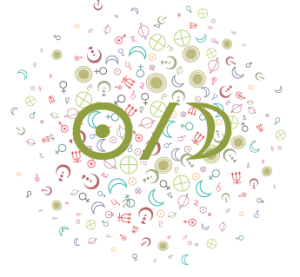 The Sun Moon Midpoint in astrology, and more specifically in the natal chart, is a highly sensitive and personal point. It is a mathematical point–the point midway (or exactly halfway) between the Sun and the Moon.
Inherent in the symbolism of the Sun/Moon midpoint is the desire for companionship. The Sun/Moon midpoint represents a point of “inner marriage” and symbolizes close personal relationship. This point is very important in any kind of relationship analysis, in addition to natal chart work.
Note that with midpoints, it is customary to consider other planets and points that form the following aspects to the midpoint: conjunction, opposition, square, semi-square, and sesquiquadrature. When a planet makes any of these aspects to a midpoint, the notation looks like the following (where, for example, Venus is the planet forming one of these aspects with the Sun/Moon midpoint):
Venus=Sun/Moon
or:
The Sun Moon Midpoint in astrology, and more specifically in the natal chart, is a highly sensitive and personal point. It is a mathematical point–the point midway (or exactly halfway) between the Sun and the Moon.
Inherent in the symbolism of the Sun/Moon midpoint is the desire for companionship. The Sun/Moon midpoint represents a point of “inner marriage” and symbolizes close personal relationship. This point is very important in any kind of relationship analysis, in addition to natal chart work.
Note that with midpoints, it is customary to consider other planets and points that form the following aspects to the midpoint: conjunction, opposition, square, semi-square, and sesquiquadrature. When a planet makes any of these aspects to a midpoint, the notation looks like the following (where, for example, Venus is the planet forming one of these aspects with the Sun/Moon midpoint):
Venus=Sun/Moon
or: Note About Midpoints:
In order to understand the symbolism of the Sun/Moon midpoint, one must understand the symbolism of midpoints in general. Ebertin, respected as an authority on midpoints, defined the midpoint as a sensitive point in a chart where the influence of the two planets involved combine together. The Sun/Moon midpoint is represented by the symbols, or glyphs, of the Sun and the Moon, separated by a slash that indicates a midpoint.
The Sun/Moon midpoint is represented by the symbols, or glyphs, of the Sun and the Moon, separated by a slash that indicates a midpoint.Part of Fortune
 In astrology, the Part of Fortune, sometimes called Fortuna, is the most popular Arabic Part. Arabic Parts are sensitive points in a chart and are calculated using specific formulas whereby two planets or points are added together, and a third planet or point is subtracted from that result.
In astrology, the Part of Fortune, sometimes called Fortuna, is the most popular Arabic Part. Arabic Parts are sensitive points in a chart and are calculated using specific formulas whereby two planets or points are added together, and a third planet or point is subtracted from that result.
The Part of Fortune is calculated as follows:
For day charts, Ascendant + Moon – Sun
For night charts, Ascendant + Sun – Moon
Note that a chart is considered a day chart when the Sun is above the horizon (occupying any house from house 7 to 12), and a night chart when the Sun is below the horizon (occupying any of the first six houses). Generally, with modern astrology, the first formula applies to all charts (many astrologers don’t make the distinction between the day and night chart).
The Part of Fortune represents worldly success and is associated with the physical body and health as well. It can be indicative of the career or vocation. The condition and placement of the ruling planet of the Part of Fortune (that is, the natural ruler of the sign in which the Part of Fortune is placed) are important to factor into the interpretation of this Arabic part. Worldly success and prosperity are associated with the Part of Fortune, and both its sign and house placement suggests innate abilities and talents–areas of life and qualities that are expressed naturally.
The Part of Fortune lies the same distance in longitude from the Ascendant as the Moon lies from the Sun. Therefore, if, for example, the Sun is conjunct the Moon in the natal chart, the Part of Fortune will lie close to the Ascendant; and if the Sun and Moon are in opposition in the natal chart, the Part of Fortune will lie close to the Descendant.
It is interesting to note that the Arabic part, the Part of Spirit, is calculated in an opposite manner, and also symbolizes the reverse or opposite theme of spiritual well-being.
*Please note that since the Ascendant is part of the formula for determining the Part of Fortune and an accurate Ascendant can only be determined with a birth time, we cannot calculate the Part of Fortune without an accurate birth time.
Keys to the Interpretation of the Part of Fortune:
As noted above, the Part of Fortune points to innate talents that set us on a path to worldly success.
- First look to any planets or points that are tightly conjunct or opposite the Part of Fortune as significators of vocation, career, and natural talents–keys to success.
- Second, determine the ruling planet of the sign of the Part of Fortune, and consider that planet as another significator.
- Consider the sign and house placement of the Part of Fortune as qualities and areas of life where we possess natural and innate talents or abilities, and that can be considered keys to worldly success and prosperity.
- Look to any planets or points posited in the same sign as the Part of Fortune, whether or not they are conjunct the point. These will also play a role in our profession.
Part of Fortune 
Indicates those areas where things will come very easily; where the Being is lucky.
Part of Fortune
In modern astrology, the most commonly seen Arabic Part is the Part of Fortune. This is calculated in two ways. If you were born during the day, you would measure from the Sun to the Moon and add that distance to the ascendant, but if you were born at night, then you subtract that distance from the ascendant.
In general, the Part of Fortune is considered a point of prosperity or joy. This is because it brings together three of the most important points in the chart that relate to our body and soul: The Ascendant, Sun and Moon. If it is well placed, it is considered easier for the person to move through the world and gain mental and physical well-being.
 The famous Part of Fortune used by Ptolemy, and the so-called “Arabian” Parts (often more than 150 parts exist) are fictitious points calculated with the longitudes of three planets, angles or zodiacal points, most often following the formula: Part = ASC + Planet X – Planet Y. This subject is described in our Arabian Parts section.
The famous Part of Fortune used by Ptolemy, and the so-called “Arabian” Parts (often more than 150 parts exist) are fictitious points calculated with the longitudes of three planets, angles or zodiacal points, most often following the formula: Part = ASC + Planet X – Planet Y. This subject is described in our Arabian Parts section.
Midheaven
 The Midheaven (
The Midheaven ( The Midheaven is the cusp of the tenth house, and is often represented in its abbreviated form: MC.
The Midheaven is the cusp of the tenth house, and is often represented in its abbreviated form: MC.
Ascendant
 The Ascendant (also known the “rising sign”) is the sign on the cusp of the first house of the natal chart. It is the sign (and degree of that sign) that is rising on the Eastern horizon at the moment of birth, with respect to the place of birth.
The Ascendant is one of the four angles of the chart. The other three are the Descendant (directly opposite the Ascendant), the Imum Coeli (IC), and the Midheaven (MC).
The Ascendant defines, in part, the first impression we make on others in a personal rather than professional sense. It represents our physical appearance, our physical bodies and overall health, and the body ego. The Ascendant is often referred to as the mask we wear, although I don’t consider it to be as superficial as this might suggest. What it does represent is our natural and personal defense mechanisms that we use to adapt to, and cope with, our environment.
The Ascendant also shows our first impressions of the world around us, and reveals our expectationsof the world around us–whether we are naturally hesitant or enthusiastic, for example. How we begin new projects, and our attitude towards new experiences come under the rule of the Ascendant.
The Ascendant in the Signs: Rising Signs
The Ascendant (also known the “rising sign”) is the sign on the cusp of the first house of the natal chart. It is the sign (and degree of that sign) that is rising on the Eastern horizon at the moment of birth, with respect to the place of birth.
The Ascendant is one of the four angles of the chart. The other three are the Descendant (directly opposite the Ascendant), the Imum Coeli (IC), and the Midheaven (MC).
The Ascendant defines, in part, the first impression we make on others in a personal rather than professional sense. It represents our physical appearance, our physical bodies and overall health, and the body ego. The Ascendant is often referred to as the mask we wear, although I don’t consider it to be as superficial as this might suggest. What it does represent is our natural and personal defense mechanisms that we use to adapt to, and cope with, our environment.
The Ascendant also shows our first impressions of the world around us, and reveals our expectationsof the world around us–whether we are naturally hesitant or enthusiastic, for example. How we begin new projects, and our attitude towards new experiences come under the rule of the Ascendant.
The Ascendant in the Signs: Rising Signs
 The Ascendant is the cusp of the first house, and is often represented in its abbreviated form: ASC.
The Ascendant is the cusp of the first house, and is often represented in its abbreviated form: ASC.
Your rising sign, also called your ascendant, is the sign that was rising over the eastern horizon when you were born. It can affect your appearance, your attitude, and the way you come across to others. For example, a conservative Capricorn with a Leo rising can appear to have some Leo-like features—s/he may have wild hair, an outgoing personality, and a more expressive style than the average Capricorn. If people always peg you for a sign other than your own, don’t be surprised to discover that it’s actually your rising sign. How do you find your rising signs? The rising sign changes every two hours, so you need to know your time of birth to get an accurate answer. Some birth certificates unfortunately don’t list your birth time, so you may need to rely on a parent’s memory or have a professional astrologer “reconstruct” your chart and make their best guess. Don’t have your birth certificate? If you were born in the United States, you can write to the Office of Vital Records in your birth state for a copy. Do a free chart here to discover your rising sign—and what it means.

How can I find my ascendant on the chart?
The ascendant is the cusp, or beginning borderline, of the zodiac’s first house. It’s always denoted by a dark line at what would be 9:00 on a clock. From the first house’s cusp, we travel around the zodiac wheel in a counter-clockwise direction. Imagine that you are standing right in the center of this horoscope wheel. The ascendant indicates the eastern horizon line that the Sun is “rising” over at that moment. The ascendant is also the starting point of the 12 houses, with the first house beginning at the Ascendant, and all the houses follow counterclockwise around the chart, until the 12th house ends at the same point that the 1st house begins—at the ascendant.
How often does the rising sign change?
The ascendant changes zodiac signs about every two hours. Since the sun rises and sets at different times depending on the season, a person born at 10:00 a.m. in April would have a much different ascendant than someone born at 10:00 a.m. in November. Fun fact: If you were born at sunrise (or within two hours of it), your ascendant will be the same sign as your Sun sign (e.g., Taurus with a Taurus rising—or a “double Taurus”). Someone born at the exact same time as you, but in another time zone, may have an entirely different birth chart because the planets will be in different houses. It’s like the difference between Bradley Cooper appearing in The Hangover II (which could be a raucous Aries rising) versus a serious drama such as Silver Linings Playbook (a sensitive Cancer rising, perhaps).Vertex
 The Vertex, sometimes called counter-Ascendant, is a fictitious point which is at the intersection of two great circles, the Ecliptic and the great vertical circle (Prime Vertical) in the West of the birthplace, linking the East, the Zenith, the West, and the Nadir. It is always located in the West of the chart around the Descendant. It is the chart’s fifth angle, so to speak, less important than the other angles. Its interpretation is controversial, because certain astrologers pay no attention to it.
The Vertex, sometimes called counter-Ascendant, is a fictitious point which is at the intersection of two great circles, the Ecliptic and the great vertical circle (Prime Vertical) in the West of the birthplace, linking the East, the Zenith, the West, and the Nadir. It is always located in the West of the chart around the Descendant. It is the chart’s fifth angle, so to speak, less important than the other angles. Its interpretation is controversial, because certain astrologers pay no attention to it.
Vertex
The Vertex is a point located in the western hemisphere of a chart (the right-hand side) that represents the intersection of the ecliptic and the prime vertical. In astrology, it is considered an auxiliary Descendant. The Anti-Vertex is the point that is exactly opposite the Vertex. Some astrologers refer to the Vertex as the “third angle” of a chart.
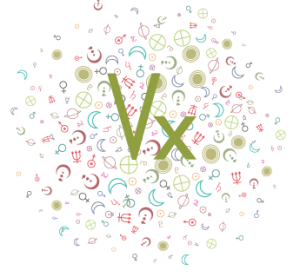 The Meaning of the Vertex in Astrology
The Meaning of the Vertex in Astrology
Use and meaning of the Vertex in astrology is debated–those who use the Vertex generally feel it is a point of karmic or fated connection. Some consider it a point of “wish fulfillment.” It is perhaps most widely used in synastry. The Vertex is said to be activated at major turning points in our lives, most notably when we meet a significant other or end a significant relationship, and some believe it is triggered when there is a birth or death.
I use the Vertex in all of my astrological work. In synastry, it is often prominent in significant relationships: one person’s personal planet or ASC conjuncts or opposes the other person’s Vertex, generally conjuncts. I use a rather tight orb of 2 degrees. These interaspects are not present in all significant relationships, but when they are present in romantic connections, there is a rather common theme in place: the individuals meet and do not fall in love right away. In fact, there can be some feeling of reluctance, and, unlike South Node connections in synastry, they don’t feel an instant sense of recognition. When they do fall in love, it is much like an “epiphany”(1) — sort of on the lines of “Wow, I really do like you–I didn’t expect this!” The feelings come “out of the blue” and in a rush of feeling.
Note that synastry contacts between the progressed Vertex in one chart and a personal planet or the Ascendant in another’s chart are significant as well.
In predictive work, I have found the Vertex prominent when important connections are made. For example, in my own life, each of my significant romantic relationships featured the following: the Venus Return for the years that I met these people had the Vertex and Moon’s Node in tight hard aspect (conjunct and square), and transiting Venus in hard aspect to those points on the day that I met them. (Read more about Venus Return charts here). Secondary progressions and solar arc directions involving progressed or directed Vertex and progressions or directions to natal Vertex were also prominent. The Vertex-Node connection in the Venus Returns in my life are perhaps especially meaningful and striking because Venus rules my seventh house (and Vertex).
Every now and again, I speak with people who have had two (and sometimes more) “significant others” with the same birth date, but different years. This means that the people they were partnering with had roughly the same degree and sign of the Sun. With the exception of one whose birth time is uncertain, each of these people were meeting more than one significant other whose Sun was conjunct their natal Vertex.
It is important to note that when romantic partners have conjunctions between one person’s Vertex and the other person’s personal planets (and/or going both ways), it doesn’t necessarily mean the relationship is a blissful, “happily ever after” one. That is hardly the case. However, it does suggest a powerful connection.

